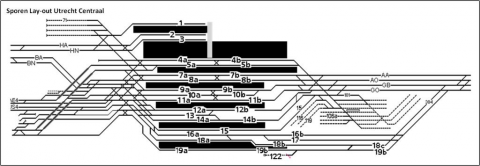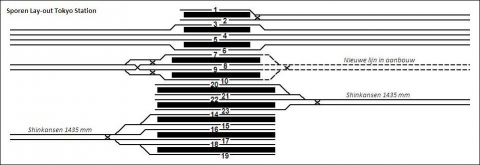
One of the most awesome things I experienced during my study tour through Japan in 2008 was taking the train. Although the shiny Shinkansen “bullet trains” are certainly not cheap, they easily compete with domestic flights in terms of price, speed, comfort and reliability (97% of trains are within 5 minutes of schedule). Being Dutch, I of course like to complain about the reliability of our own national railways. Me and my friends joked a lot about how Dutch trains would surely be more punctual if train drivers felt obligated to commit Seppuku if they were late. As it turns out, Japan’s impeccable record for railway performance can not be dismissed as the result of some uniquely Japanese cultural values. In a report from a task-force of ProRail (the Dutch railway infrastructure organisation), they find that the efficiency of the Japanese railways can be explained much more easily by a different Japanese value: simplicity.
After carefully studying the Japanese railway situation and comparing it to the one in The Netherlands, the task-force came to the conclusion the Japanese are simply better at keeping their focus on doing the bare minimum to provide the best service for the least money, while leaving out all the other frills that might be beneficial, but add to the complexity of the system as a whole. I won’t rehash the entire report here, but these conclusions are too good to leave out:
- Japan has a higher resolution of signals and signs and they are optimised to reduce the time a train occupies each bit of track
- Japanese trains accelerate faster and operate at higher average speeds
- When a train arrives at the station in Japan, they know exactly how long it is and where the doors will be. This reduces the time is in the station and thus standing still.
- Japanese safety margins for braking etc. are tighter and more realistic.
- Although there are more signals, there are less switches so less points of failures and again less complexity (and thus planning etc.) in Japan.
As always, a picture says more than a thousand words, so for fun, just compare these two schematics of Tokyo and Utrecht station.
It sounds cliche, but simplicity really does lead to more efficient and effective operation and the Dutch railways can surely learn from their Japanese counterparts. If they do, I will gladly find something new to complain about.


Pingback: Alper Çugun
Pingback: Johan Noltes
Pingback: Michel
Pingback: Roy